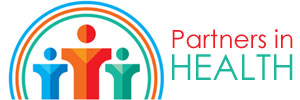
Reprinted from the spring 2023 issue of The Ohio Family Physician
By: T.M. Ayodele Adesanya, MD, PhD; and Randell K. Wexler, MD, MPH; Department of Family and Community Medicine, The Ohio State University College of Medicine
Poverty is a risk factor for the development of numerous diseases without any recognized biologic explanation.1,2,3,4 Poverty and financial stress are also barriers for patients with diseases to achieve the best possible physical and mental health.5 Medical-financial partnerships have been recently described as an opportunity to integrate clinical and financial services to optimize overall health, particularly in disadvantaged communities.6,7,8 Here, we encourage collaboration with local financial empowerment teams to introduce medical-financial partnerships to Ohio family medicine clinics.
Most literature regarding medical-financial partnerships has been from the pediatric research community. Pilot programs have enrolled families to meet with financial counselors in clinic or community settings to start college savings accounts, prepare tax documents, repair credit, plan towards retirement, advance budgeting skills, and learn investment strategies. Many of these services have been provided free of charge, supported through grants, health system funding, and philanthropy. With the training to care for whole families and patients throughout all life stages, family physicians are uniquely positioned to integrate medical-financial partnerships into their practice. Such approaches can have generational impacts at individual and community levels and can provide a novel model for care delivery and further research. These initiatives will also prompt discussion of financial health amongst and between patients, families, and the medical community—a topic often neglected even amidst the unique intimacy and confidentiality of the medical enterprise despite its clear relationship to physical and mental wellness.
There are financial empowerment teams in Ohio that work with clients to discuss topics including financial literacy, tax assistance, budgeting, credit repair, debt reduction, homebuyer education, and savings opportunities. Nationwide Children’s Hospital’s Healthy Neighborhoods Healthy Families initiative is a medical-financial partnership that links clients with financial coaches as part of its economic development program. Additional resources help clients navigate affordable housing, education, and work readiness. In addition, The Ohio State University Extension provides financial coaching through many county offices. County family and consumer sciences educators work with clients through their Healthy Finances Program. Additional programming is tailored to high school and elderly clients. Finally, the cities of Columbus, OH, (partnering with Jewish Family Services) and Akron, OH, (partnering with United Way) are financial empowerment centers—areas nationwide that provide free financial counseling to clients available per individual request. These teams are all vibrant examples of financial empowerment programs in our state, and opportunity may exist for Ohio’s family physicians to partner with these, or other teams, to improve the financial and overall health of the patients and communities that they serve. Such collaborations would represent a novel strategy to extend the reach of our specialty’s population health mission.9
As family physicians, we interface at the clinic-community level. Health systems and clinic offices are also community employers, often with a robust influence on local economies. Collectively, the financial well-being of our patients, their families, and their communities does not seem unrelated to our practice of family medicine. Medical-financial partnerships represent a unique opportunity to target poverty and financial stress as determinants of health. Implementation of these interventions must be guided by cultural humility, awareness of implicit biases, and realization that many systemic barriers must also be addressed to achieve equity in both wealth and health. This notwithstanding, medical-financial partnerships may yield meaningful and lasting effects on the physical, mental, and financial health of individuals, families, and communities. In prioritizing engagement with patients from diverse backgrounds, these efforts can additionally focus on important topics of race, wealth inequities, health disparities, and health equity, and will naturally present opportunities to advance community-clinic relationships and perhaps inspire an increased pipeline of scholars from disadvantaged backgrounds into the health sciences and financial services.10
References available on the Ohio Academy of Family Physicians website.




